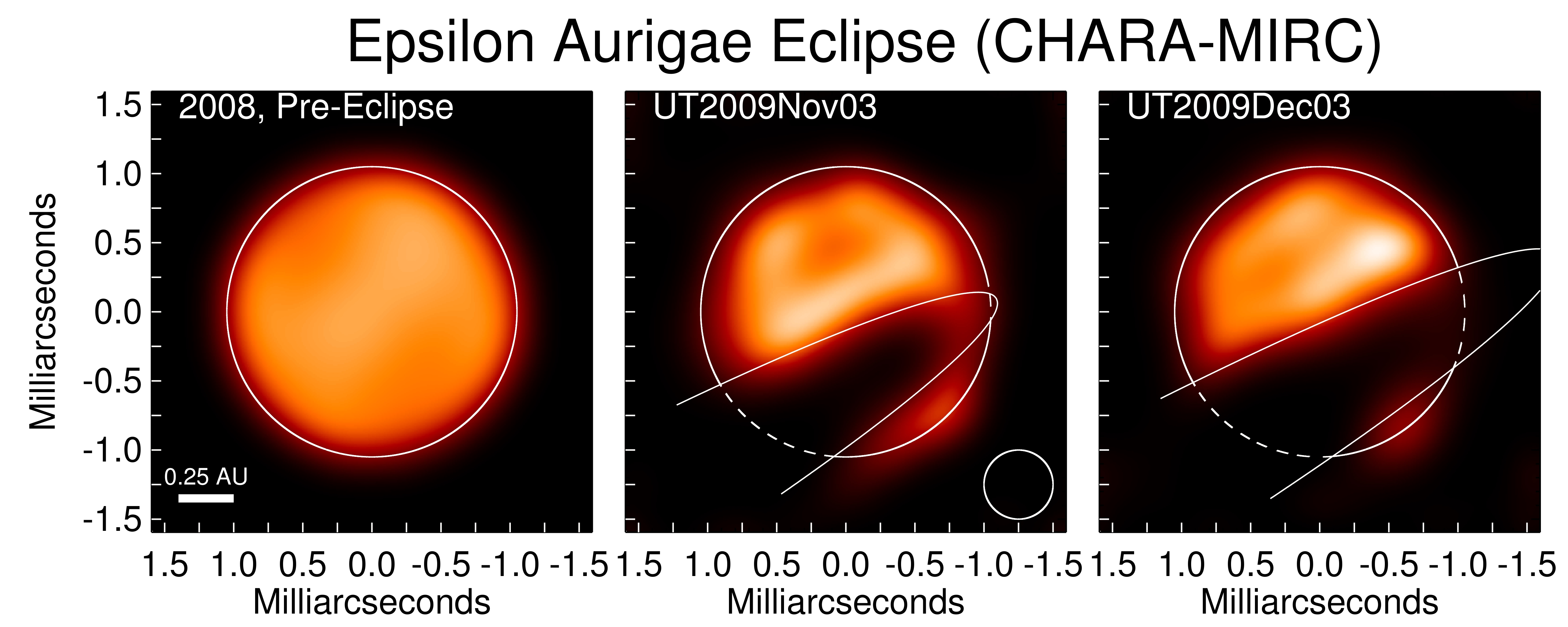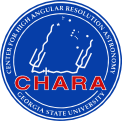
Astronomers used the CHARA Array to image the eclipse of the star Epsilon Aurigae by its mysterious, less luminous companion star. Epsilon Aurigae has been known since 1821 as an eclipsing double star system, but astronomers have struggled for many decades trying to decipher the clues to what was causing these eclipses, which happen every 27 years. The images of the eclipse in 2009-2010 largely settle the matter: the eclipse is caused by a disk of material, probably similar to the state of our solar system 4.5 billion years ago as the planets began to form around our own infant sun.
The images of Epsilon Aurigae show the intrusion of an apparently wedge-shaped structure across the face of a huge star, nearly 150 times the size of our sun. The images of the star and wedge-shaped structure show the direct motion over the course of the eclipse, yielding a measurement of the relative masses of the components. The primary star itself is thought to be in a very interesting phase of its own evolution, turning out to be less massive than the eclipsing disk and the star hidden at the center of that disk.
Because astronomers hadn't observed much light from the faint companion, the prevailing opinion labeled it a smaller star orbited edge-on by a thick disk of dust. The theory held that the disk's orbit must be in precisely the same plane as the dark object's orbit around the brighter star, and all of this had to be occurring in the same plane as Earth's vantage point. This would be an unlikely alignment, but it explained observations. The CHARA images show that this is indeed the case. A geometrically-thin, dark, dense, but partially-translucent cloud can be seen passing in front of Epsilon Aurigae.

References:
Infrared images of the transiting disk in the ɛ Aurigae system
Kloppenborg et al. 2010, Nature, 464, 870
Interferometry of ε Aurigae: Characterization of the Asymmetric Eclipsing Disk
Kloppenborg et al. 2015, ApJS, 220, 14



